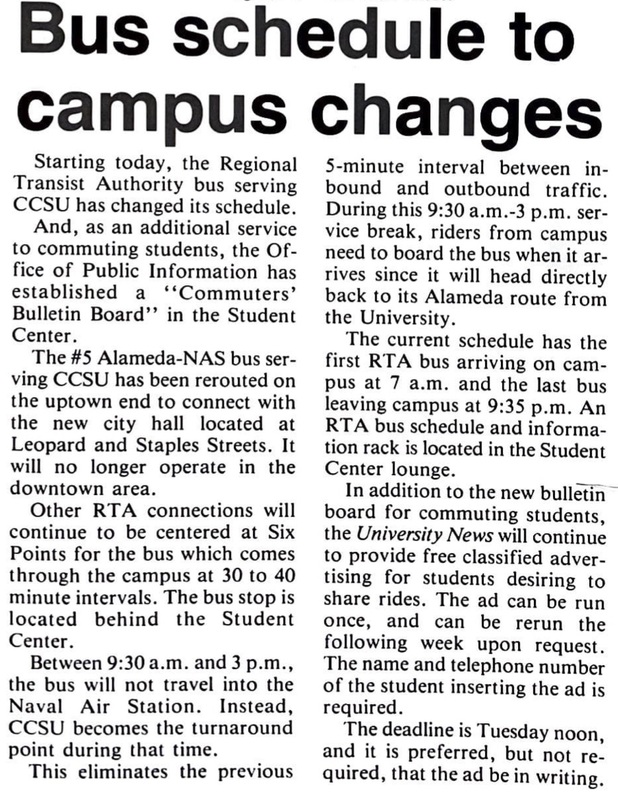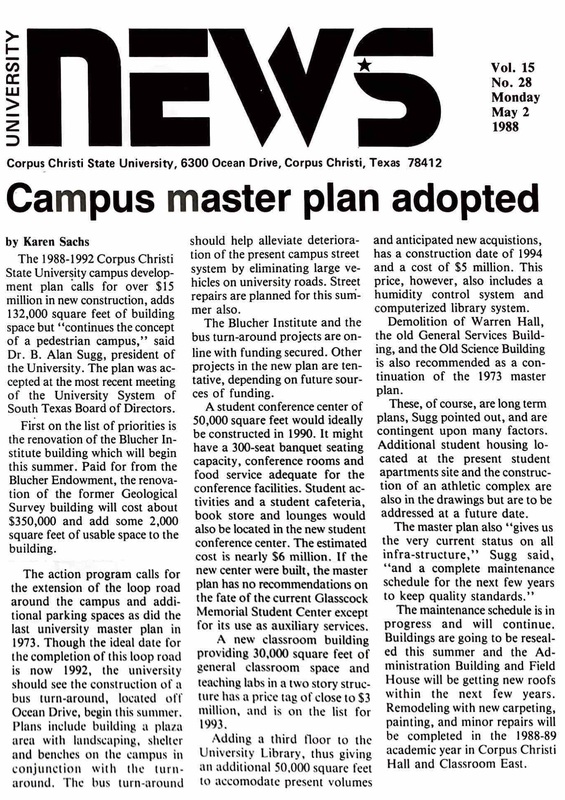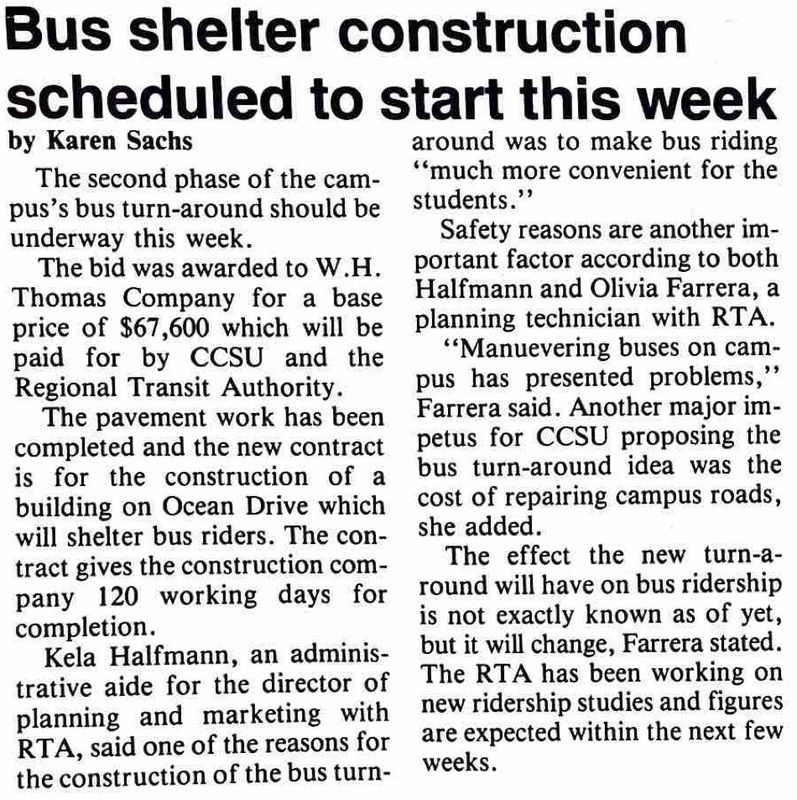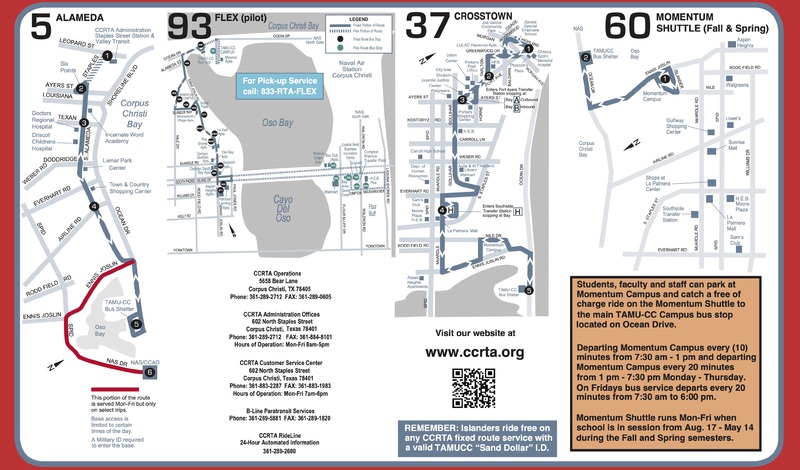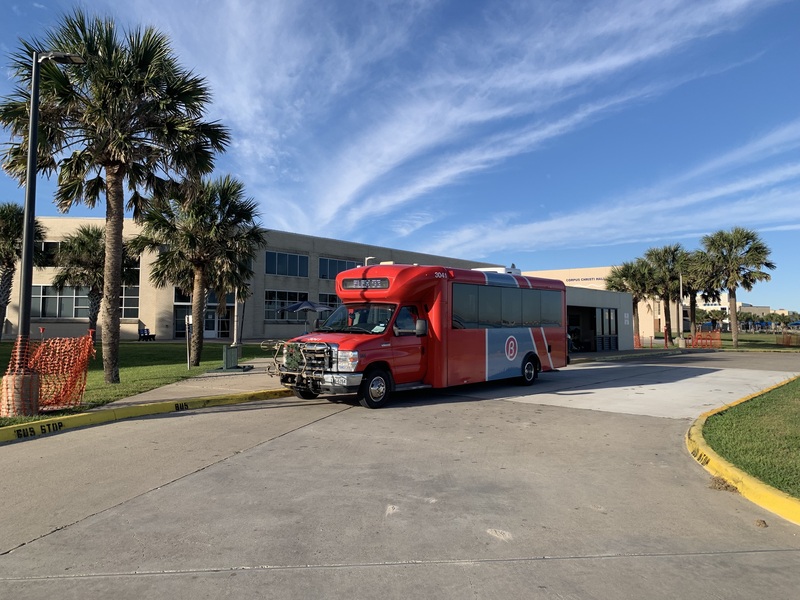TAMUCC transportation fostering community engagement and collaboration
By: Bibek Luitel
The interaction between higher education institutions and the communities they serve is critical to creating an inclusive and collaborative environment. The transportation efforts of Texas A&M University-Corpus Christi (TAMUCC), previously known as Corpus Christi State University (CCSU), are a key component of the university's commitment to fostering community participation and connection. Being an island university, TAMUCC's transportation system is important for students, faculty, and staff for their regular commutes to campus and for the community to enhance collaborative work. The connectivity initiatives help the two-way movement of the ‘university people’ going to the community and the ‘community people’ going to university. This exhibit is based on historical archival research and oral history, which helps to explore the question: how can TAMUCC optimize and leverage its transportation resources to address emerging challenges and opportunities in community engagement and collaboration?
Background
In the past, the institution has tried to foster an atmosphere that extends outside its campus. TAMUCC's transportation system has developed as a strategic instrument not only for commuting students and staff to campus but also for promoting cooperation, community involvement, and synergy between the institution and its larger civic environment. The mission of the institute generally demonstrates its commitment to serve (Morphew & Hartley, 2006)[1], which is clearly mentioned in the vision statements of TAMUCC as 'service excellence’. In the context of the university's expansion and progress, the transportation system has adjusted to conform to TAMUCC's fundamental principles of ensuring accessibility, promoting inclusivity, and fostering partnerships with the community. TAMUCC’s transportation ecosystem not only tries to address the needs of the campus and community but also acts as a driver for collaboration, cultural interchange, and mutual enrichment.
Archival Resource Analysis
Following historical archive methodology helps to understand the complexity of the phenomenon in relation to the past (Aldridge, 2015)[2]. After exploring the archive of the TAMUCC library, some of the artifacts demonstrate the transportation initiatives at the time of the transition from CCSU to TAMUCC in the late 1980s. The university news of CCSU on January 18, 1988, published the news under the heading ‘bus schedule to campus changes’, which explains the cut-off of services in some of the areas where the #5 Alameda route bus was providing services (University News, 1988)[3]. At the time of transition, prestige-seeking (Morphew & Baker, 2004)[4] was one of the debatable issues, which may demand more costs to provide services to students. However, curtailing the service would not support that mission. Reducing the transportation service to downtown may impact the students' engagement in the community activities and participation in the programs organized in the downtown area.
Another artifact, the banner news published in University News on May 2, 1988, under the title ‘campus master plan adopted’, explained the new master plan adopted that aligned with the institutional mission of service (Sachs, 1988)[5]. The new master plan, which replaced the previous master plan developed in 1973, gave priority to infrastructure development, including the transportation-related system. The master plan realized the importance of connectivity between the university and community, along with student service for commuting.
The masterplan started to be implemented in the same year, 1988, of its adoption. University News published the news on November 7, 1988, under the heading ‘bus shelter construction scheduled to start this week’, which described the budget of $67,600 paid by CCSU and the Regional Transit Authority (Sachs, 1988)[6]. These constructions were for the safety and convenience of the students, staff, faculties, and others who used the bus services.
Present-day connection
TAMUCC has been engaging in multiple dimensions of academic and social activities to impact the academic community on campus and outside the campus community. TAMUCC’s strategic plan, ‘The Islander Impact Strategic Plan 2030’ (TAMUCC, nd.)[7] has mentioned some explicit objectives and indicators regarding impact. On the title 'The Impact of Engagement’, the plan mentions the larger goal of the campus as ‘to create a vibrant campus climate that makes Corpus Christi a university town through active, multifaceted engagement that extends throughout the region’. The campus concisely mentions the objectives relating to community engagement and partnership as "Develop programs and services that engage Islander students, faculty, staff, alumni, and the Coastal Bend region to build a sense of community, foster university traditions, and promote Islander pride and spirit, resulting in increased recognition and visibility." Furthermore, the plan emphasizes the collaboration between campus and community as ‘Develop strategic and holistic approaches to community service, engagement, and sustained partnerships in student learning and professional development, public and civic participation, research and scholarly opportunities, and donor involvement’. The objectives of the plan place a high priority on collaboration and partnership between the TAMUCC and the community, where transportation plays a crucial role in connectivity among the constituents of the campus.
Connectivity through transportation is becoming more important for TAMUCC since the campus has been growing significantly in the last 30 years. The transportation partner of TAMUCC, Corpus Christi Regional Transportation Authority, published a brochure in 2020, mentioning the different routes of shuttle services to TAMUCC (CCRTA, 2020)[8]. Currently, one dedicated shuttle service (#60 route) is running between campus and student housing, Momentum, frequently in the daytime during long semesters. The other three shuttle services (#5, #37, and #93 routes) are serving limited times and routes from campus to a few places in the city. Because of their limited time in operation, these shuttle services limit student and community engagement and connection. These transportation services have more focus on commuting the students to campus, and that is not enough frequency and time for the required services. Campus, as a social actor, has a significant role in regional development through collaboration with other social organizations (Mader et al., 2013)[9]. In this connection, TAMUCC has more room for improvement to increase the shuttle services to other routes in the city and increase the option of connections between TAMUCC and other social entities, which eventually helps collaboration for a vibrant society.
TAMUCC, as a Hispanic-serving institution, acknowledges the importance of social justice and student engagement. By improving its transportation system, the university aims to address mobility challenges faced by underserved communities, connecting them to essential services and opportunities. The transportation service system should focus on expanding shuttle routes to more areas of Corpus Christi, providing affordable options for students and other people, and fostering community partnerships for different activities. The goal is to break down barriers between the university and the community, alleviate social isolation, and strengthen community bonds. Enhanced transportation is seen as a catalyst for building a more inclusive, collaborative, and equitable society through increased civic engagement and improved community problem-solving.
Considering the growing phenomenon of TAMUCC in recent decades, policymakers and institutional leaders may think about policy intervention to address the emerging challenges and opportunities of collaborating with TAMUCC and community organizations. The policy response to the transportation issue can be analyzed as a transportation ‘policy ecology’ framework in which actors, the relationship between stakeholders, the policy environment and structure, and the process among stakeholders are systematically analyzed (Weaver-Hightower, 2008)[10]. Actors such as TAMUCC policymakers, students, faculties, administrators, local government, transport authorities, and community organizations can be involved in the policy process. The relationship between government and university, university and community, and among the different departments in the TAMUCC is critical for policy response. The physical environment, regulatory environment, and organizational structure should be taken into consideration. Lastly, it is crucial to involve TAMUCC officials, local government, and community organizations in the transportation policy development process, implementation process, and monitoring and evaluation process.
Implication
TAMUCC's transportation system involves strategic planning, emphasizing a deliberate and planned course of action. The university views the transportation system as integral to its relationship with the broader community. The transportation system initiative reflects a holistic vision, recognizing the transportation infrastructure as a unifying force and fostering synergy within the campus and between the university and the community. Described as a catalyst for collaboration, the transportation system aims not only to provide commuting services but also to facilitate partnerships with local entities, creating a more interconnected environment. A long-term commitment to using transportation for lasting community engagement and foreseeing a positive impact on both the university and the community. The focus of the transportation system is a commitment to inclusivity, addressing potential barriers for all community members connecting with the university. Furthermore, the system may extend beyond transportation services, encompassing educational programs, cultural exchanges, or events to enrich both the university and community experience.
Conclusion
Going beyond the traditional role of transportation, it serves as a catalyst for community engagement, embodying a community-centric approach focused on inclusivity and long-term impact. This reflects TAMUCC's commitment to creating a vibrant environment, fostering partnerships, and promoting synergy, education, and cultural exchange. By addressing mobility challenges, the system contributes to the cohesion of the Corpus Christi community. Positioned as a pivotal force, TAMUCC's transportation system is assured to shape a more interconnected, inclusive, and collaborative future for both the university and the broader community.
References
[2]Aldridge, D. P. (2015). The ideas and craft of the critical historian of education. In A. M. Martínez-Alemán, B. Pusser, & E. M. Bensimon (Eds.), Critical approaches to the study of higher education: A practical introduction (pp. 103–129). Johns Hopkins.
[8]CCRTA (2020). Texas A&M University-Corpus Christi Connection 2020-2021. Brochure.
[9]Mader, M., Mader, C., Zimmermann, F. M., Görsdorf-Lechevin, E., & Diethart, M. (2013). Monitoring networking between higher education institutions and regional actors. Journal of Cleaner Production, 49, 105-113.
[4]Morphew, C. C., & Baker, B. D. (2004). The cost of prestige: Do new research I universities incur higher administrative costs? Review of Higher Education, 27(3), 365-384. doi:10.1353/rhe.2004.0005
[1]Morphew, C. C., & Hartley, M. (2006). Mission statements: A thematic analysis of rhetoric across institutional type. The Journal of Higher Education., 77(3), 456-471. doi:10.1353/jhe.2006.0025
[5]Sachs, K. (1988, May 2). Campus master plan adopted. University News, Vol. 15, No. 28.
[6]Sachs, K. (1988, November 7). Bus shelter construction scheduled to start this week. University News, Vol. 16, No. 9.
[7]TAMUCC (nd.). The Islander Impact: Strategic Plan 2030. https://www.tamucc.edu/president/strategic-plan/engagement.php (Retrieved on December 2, 2023)
[3]University News (1988, January 18). Bus schedule to campus changes. University News, Vol. 15, No. 14.
[10]Weaver-Hightower, M. B. (2008). An ecology metaphor for educational policy analysis: A call to complexity. Educational researcher, 37(3), 153-167.

